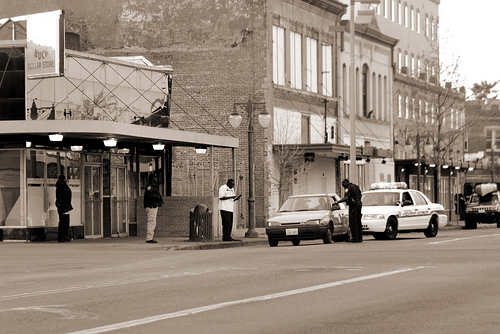For my brief I chose to focus on a quote which I felt not only encapsulated this section of the book, but the work in it’s entirety. It also struck me as relevant to my life, especially of late. It’s on page 149 where Coates says:
“They made us into a race. We made ourselves into a people.”
In relation to the book, I feel like this quote upholds this idea of beautiful resilience by the Black community which Coates consistently intertwines into his narrative. Since race was and, in many ways, still is a social construct used to compartmentalized different people and distinguish the dominant and powerful from the inferior minorities, to embrace race isn’t always portrayed in a positive light. There’s also the fact that the collective historical Black community experience within America has been littered with struggle through exploitation, oppression, marginalization - things which obviously weren’t appealing to those who endured them. Now, in our modern context, the products of said history - whether it be through Black “marked” communities or individuals - are being degraded and deemed not appealing to dominant “American” culture. Some results of this dynamic are discussed explicitly by Coates - for example, the attempts by Black youth to “whitewash” their identity to be accepted and a dissonance between up and coming generations and the struggle of their ancestors.
This has definitely played out in my own life - I was privileged* in my childhood and adolescence in a sense that my race really only infringed upon my experience in the form of stereotypes, racist jokes and personal feelings of inferiority [* because privilege could also be seen as being sheltered from fully realizing the reality of my people]. My race, for the most part, could be ignored by myself in public, which contrasts how individuals of the same skin color spectrum are being threatened and killed for that exact reason. Due to stereotypes mostly, to associate with being Black wasn’t a particularly positive move to make - especially being the “Whitest Black kid” and “oreo” coming from a family that, against perceivable cultural norms, were the same as they weren’t criminals or impoverished people.
However, something I’ve realized through this class, various conferences, lectures and events about race and just talking to others, and something which I believe Coates would agree with, is that there’s a beauty in struggle. That beauty is the fact that we can call ourselves a “people” - a term whose connotation implies notions such as unity, intimacy, relation, community and support. The comfort and intimacy which Coates details being able to feel with both Black peers and strangers is one which I believe can only exist out of a mutual understanding of where our people have come from. Also, especially through the dialogue with Mabel Jones, I felt that the strength in struggle was highlighted as well as the bittersweet realization that those things we are put at higher risk of as a people [in this case, police brutality] aren't imposed upon ourselves rooted in an inherent sense of inferiority. Mable Jones and her lineage were and are embodiments of perseverance through an unfair and unjust burden placed upon Black people. A question I’d pose to the class would be whether or not others believed the same.








